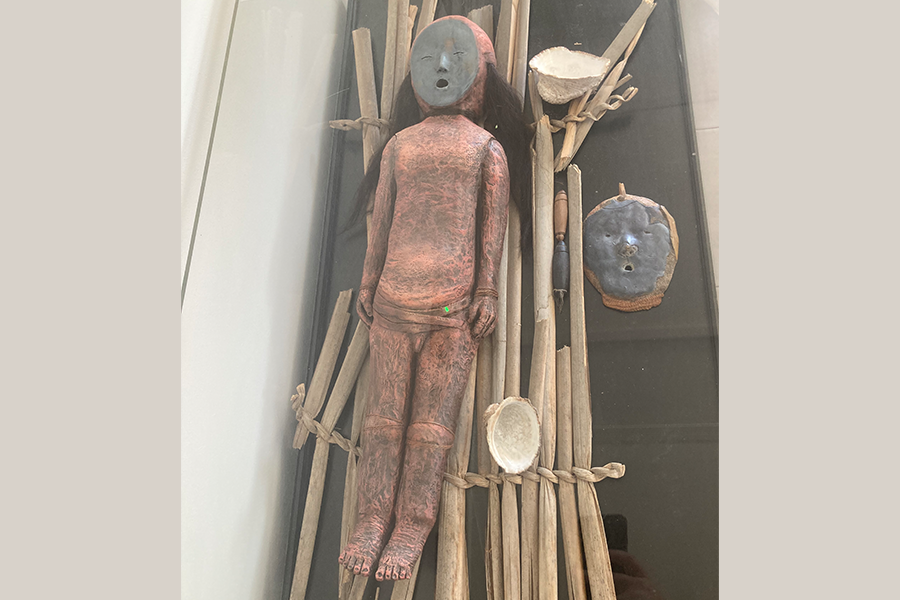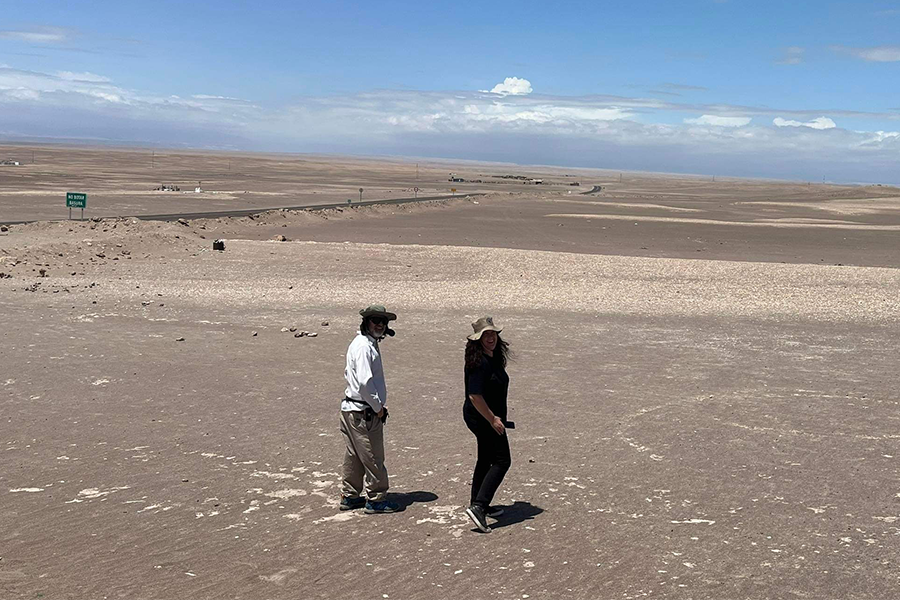
Professor Siân Halcrow is working with an international group of researchers to analyse the black mineral pigment of manganese, used by the ancient Chincorro people of Chile to paint the world’s earliest artificially prepared mummies. Reconstructions of the mummies are on display in museums.
Professor Siân Halcrow’s work has taken her to some of the most significant archaeological dig sites in the world.
This has enabled the renowned bioarchaeologist, who heads Otago’s Biological Anthropology Research Group in the Department of Anatomy, to shed light on the impact major social changes of the past have had on infants and children.
The mother-infant nexus which gives insight into overall population health is her focus, with her lab analysing shared stories of maternal and foetal stress through mortality, dental enamel defects, maternally acquired metabolic disease, infant diet, and weaning.
In particular, Professor Halcrow’s work has reshaped academic understanding of the impact agricultural development and intensification had on society.
“Human health deteriorated as populations transitioned to agricultural societies – people became sedentary; populations grew into denser settlements leading to insanitary conditions; there was a reduction in dietary diversity; and the domestication of animals led to an increase in disease transmission.
“More than half of the world population lives in crowded, insanitary conditions which have their roots in the development of agriculture,” she says.
By studying skeletal remains in sites in Thailand, Cambodia, Laos, and China, she also ensures the stories of populations – often ignored by Eurocentric perspectives – are told.
She has authored more than 120 peer reviewed articles since 2007, her latest, published in the Journal of Archaeological Science: Reports, focused on ancient hunter-gatherer populations of the Atacama Desert in Chile.
She and an international group of researchers analysed the black mineral pigment of manganese (Mn) used for millennia by the Chinchorro people to paint the world’s earliest artificially prepared mummies, including those of babies and fetuses.
“Through this assessment we hoped to find where they were gathering this manganese pigment, how it was prepared, and why it was such an enduring component of these exquisite mortuary practices,” she says.

Professor Bernardo Arriaza, of the University of Tarapacá in Arica, and Professor Siân Halcrow head of Otago’s Biological Anthropology Research Group in the Department of Anatomy, in Chile’s Atacama Desert.
Through physical surveys of riverbeds, and analysis of geological data, they found the Chincorro acquired the Mn locally, rather than from the Andean Highlands as was previously thought.
The deposits were relatively easy to mine, and the people had the technology to refine it.
“This is significant because it may explain the enduring use of this pigment for thousands of years, which changes our understanding of their whole lifeways and subsistence.
“Their society was highly engaged in the procurement and sophisticated refinement of this pigment. It was central to the Atacama environment and was used in their everyday life, which may explain its enduring use in their complex burial rituals, which predate Egyptian mummification by 2,000 years.”
Professor Halcrow’s role in the project was to analyse how mining and refinement of manganese may have affected the health of the Chinchorro.
“Much of this work involved the application of new techniques to mummified human material and archaeological deposits, which had been excavated by my colleagues in the past, and the surveying by foot and truck for geological deposits.”
She became involved in the work after meeting Professor Bernardo Arriaza, now of the University of Tarapacá in Arica, while in the US during data collection for her PhD. She has collaborated with him since on his research on the Chinchorro populations.
The area she was working in is in Arica, Northern Chile, a coastal city just south of the Peruvian boarder in the Atacama Desert.
“It is the driest hot desert in the world which has been recognised as an area of outstanding international importance with a UNESCO World Heritage status. The archaeological sites and mummies are world renowned.”
Professor Arriaza’s and Halcrow’s next publication will build further on the findings from the Chinchorro populations.
“Our recent analysis is exciting as it is showing the health effects of mining and working this mineral for the populations, which is the earliest evidence of poisoning in the world.”
What she loves most about her work is linking the present with the past.
“Through working with researchers and communities to tell the histories of past human populations, we not only shine a light on past human lifeways and cultures, but help to make important connections for locals and their cultural heritage.”
Kōrero by Ellie Rowley, Communications Adviser